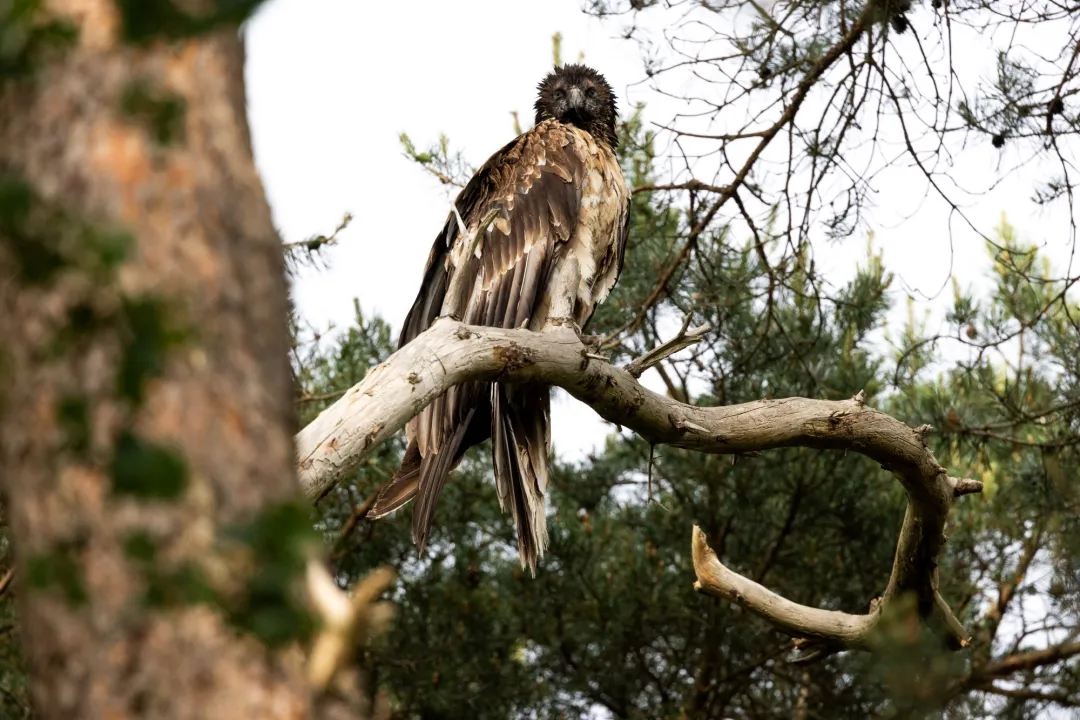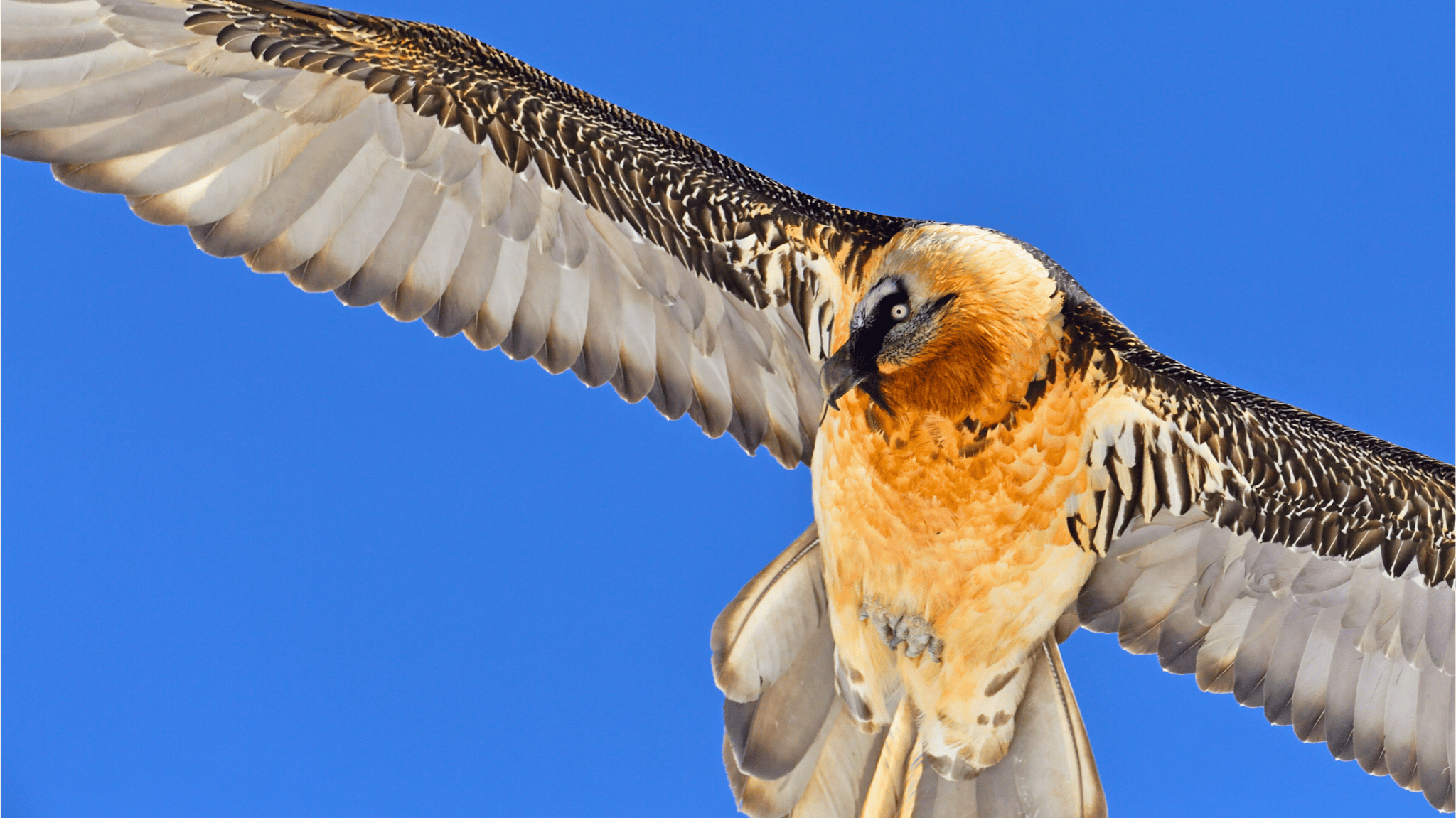For the first time ever a wild bearded vulture nestling was tagged last week in its nest in the Aude, in the French eastern pre-Pyrenees, as part of the LIFE GYPCONNECT project. The nestling hatched in the easternmost known Pyrenean nest, therefore the closest to the Massif Central, where a reintroduction project is being implemented by the VCF, LPO and other partners.
The young bearded vulture – named “Roc Genèse” after a climbing club that has collaborated in the operation – will fledge in the beginning of May. When the team – including a VCF expert – arrived at the site, the adults were not nearby – in fact the observation team positioned about 800 m away did not see them during the whole operation, so probably they have not even become aware that its young has been tagged. However, another immature bird (4 years old) approached the nest and flew several times near it, showing how curious these birds are – probably this was an old sibling from the young now tagged. The adults returned to the nest 2 hours after the operation finished.
Led by the League pour la Protection des Oiseaux (LPO), in partnership with the VCF, Vautours en Baronnies, Centre National d’ Informations Toxicologiques Vétérinaires, Electricité Réseau Distribution France, Parc National des Cévennes, Parc Naturel Régional du Vercors, LPO Aude, and the Université Pierre et Marie Curie – Paris 6, the LIFE GYPCONNECT project aims to establish a breeding population of bearded vultures in the Massif Central, as well as in the Pre-Alps, through reintroduction, and promoting dispersal movements between the Alps and the Pyrenean populations. This project is also co-funded by the MAVA Foundation.
This year 5 young bearded vultures will soon be released in the project area, three in the Grands Causses and two in Baronnies – the first time that bearded vultures will be released in the latter region. The project also includes the establishment of supplementary feeding points to try to attract bearded vultures from the Pyrenees to cross the Aude valley.
With tagging this bird, we hope to monitor its dispersal and see where it will end up – we hope it will eventually fly east! At the same time two ringers from the Pyrenees received training on putting tags on bearded vultures, as similar actions are planned for the future for other parts of the Pyrenees as part of the French national species action plan.
The LIFE GYPCONNECT project is part of the VCF strategy to restore the species in western Europe, now that the Alpine population is firmly re-established – 34 pairs in 2015 and a record 20 fledglings, and with the first breeding in the wild in Andalucía happening also last year (following extinction there in the 80s, and the start of the reintroduction project 10 years ago), this project aims to promote movements of the species between Iberia and the Alps, thus promoting gene flow, which will also help increasing the genetic diversity of the alpine population, and thus accelerate the end of the reintroduction project there.
Photos LPO Aude




